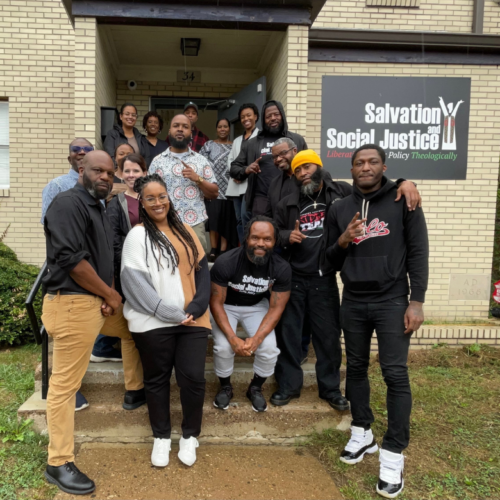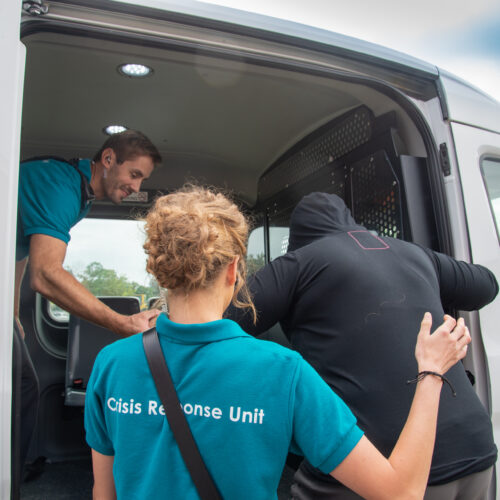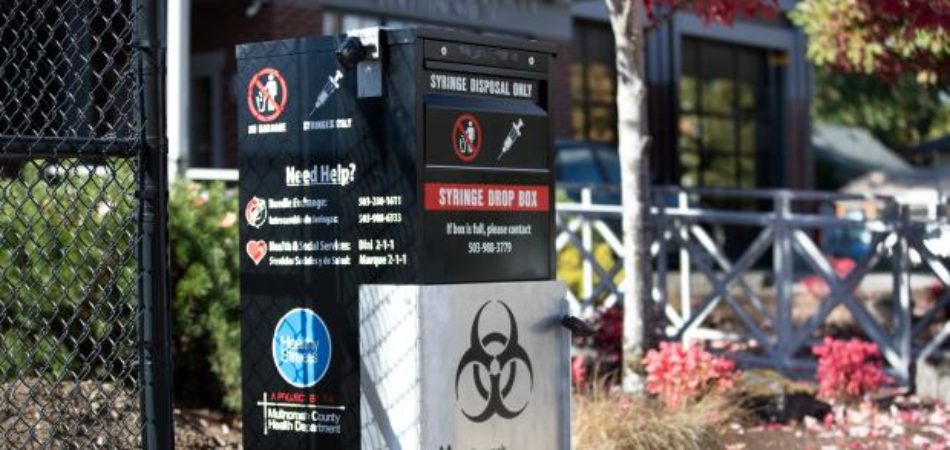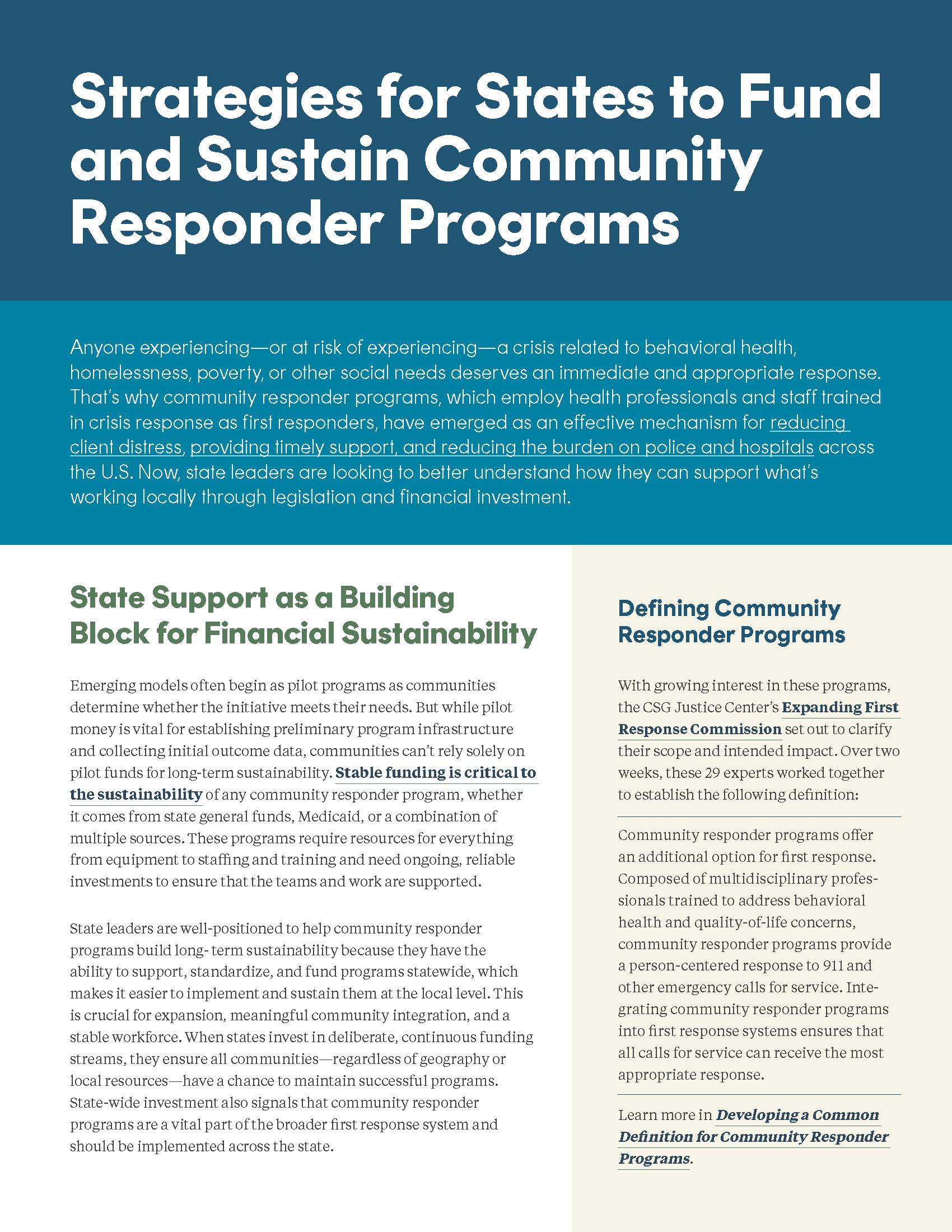Strategies for States to Fund and Sustain Community Responder Programs
The Expanding First Response Commission—which includes advocates, first responders, policymakers, researchers, state and municipal officials, and people with other personal and professional experiences—met between January and March 2025 to develop actionable guidance for state leaders interested in supporting local community responder efforts. This publication outlines three recommendations for state leaders to financially invest in local community responder programs and support their sustainability.
Strategies for States to Fund and Sustain Community Responder Programs

Photo Credit: Seattle CARE Department
Anyone experiencing—or at risk of experiencing—a crisis related to behavioral health, homelessness, poverty, or other social needs deserves an immediate and appropriate response. That’s why community responder programs, which employ health professionals and staff trained in crisis response as first responders, have emerged as an effective mechanism for reducing client distress, providing timely support, and reducing the burden on police and hospitals across the U.S. Now, state leaders are looking to better understand how they can support what’s working locally through legislation and financial investment.
Emerging models often begin as pilot programs as communities determine whether the initiative meets their needs. But while pilot money is vital for establishing preliminary program infrastructure and collecting initial outcome data, communities can’t rely solely on pilot funds for long-term sustainability. Stable funding is critical to the sustainability of any community responder program, whether it comes from state general funds, Medicaid, or a combination of multiple sources. These programs require resources for everything from equipment to staffing and training and need ongoing, reliable investments to ensure that the teams and work are supported.
State leaders are well-positioned to help community responder programs build long-term sustainability because they have the ability to support, standardize, and fund programs statewide, which makes it easier to implement and sustain them at the local level. This is crucial for expansion, meaningful community integration, and a stable workforce. When states invest in deliberate, continuous funding streams, they ensure all communities—regardless of geography or local resources—have a chance to maintain successful programs.
“Community responder programs should be a general fund priority at every level of government. This isn’t alternative first response, it is first response and should be incorporated into the public sector,” says Dr. Amy Barden, Chief of Seattle Community Assisted Response and Engagement (CARE) Department and Expanding First Response Commission Member.
Defining Community Responder Programs
With growing interest in these programs, the CSG Justice Center’s Expanding First Response Commission set out to clarify their scope and intended impact. Over two weeks, these 29 experts worked together to establish the following definition:
Community responder programs offer an additional option for first response. Composed of multidisciplinary professionals trained to address behavioral health and quality-of-life concerns, community responder programs provide a person-centered response to 911 and other emergency calls for service. Integrating community responder programs into first response systems ensures that all calls for service can receive the most appropriate response.
Learn more in Developing a Common Definition for Community Responder Programs.
3 Things State Leaders Can Do to Financially Invest in Community Responder Programs
The Expanding First Response Commission—which includes advocates, first responders, policymakers, researchers, state and municipal officials, and people with other personal and professional experiences—met between January and March 2025 to develop actionable guidance for state leaders interested in supporting local community responder efforts. Below are three of their recommendations:
1. Establish stable, ongoing funding streams through state legislation and budgetary processes.
This can be done by creating dedicated grant programs to support pilot initiatives and developing consistent, tax-based funding streams earmarked for ongoing operations. Cementing these mechanisms in state law helps ensure long-term sustainability and consistency. Embedding funding in statute also affirms community responder programs as essential public resources and reinforces their role as a stable, trusted component of the first response system.
2. Invest in federal opportunities while incentivizing partnerships with local institutions.
State leaders are uniquely positioned to expand on these opportunities whether through state investment in Medicaid or the dispersal of opioid settlement funding or state cannabis revenue to pilot programs. They can also facilitate partnerships with hospitals, universities, community-based organizations, and philanthropic partners for joint funding pursuits. And they can support collaboration with local law enforcement agencies and ensure that community responder programs have access to diversion or deflection funding.
3. Set up state-wide mechanisms for tracking and promoting community responder outcomes.
Through state legislation, leaders can establish centralized data systems that allow community responder programs to effectively track and publish their outcomes. Data on outcomes such as cost savings, reduced recidivism, and increased community resource connections can then demonstrate community responder program effectiveness, providing a foundation for sustained investment. These outcomes, when made public and highlighted by state leaders, can also incentivize continued support.
State Example of These Strategies in Action
To support local efforts, New Jersey state officials passed the groundbreaking Seabrooks-Washington Community-Led Crisis Response Act following public outcries and collaborative efforts by a wide range of stakeholders, including community organizations, advocacy groups, law enforcement, mental health professionals, and public health experts The law is intended to establish community crisis response teams across the state to support people experiencing mental health crises, reduce encounters with police, and provide trauma-informed services and resources. To achieve these goals, the law includes a provision of $12 million in grant money for 6 eligible counties to pilot community crisis response programs and to establish a statewide Community Crisis Response Advisory Council within the New Jersey Office of Alternative and Community Responses.
Project Credits
Writing: Rachel Lee, CSG Justice Center
Research: Mari Bayer, Michelle Fernando, and Rachel Lee, CSG Justice Center
Advising: Hallie Fader-Towe and Anne Larsen, CSG Justice Center
Editing: Darby Baham, CSG Justice Center
Design: Theresa Carroll, CSG
Web Development: Caroline Cournoyer, CSG Justice Center
Public Affairs: Sarah Kelley, CSG Justice Center
Back to Top of Publication.
This May, the state of Washington passed legislation supporting the expansion of alternative response teams (sometimes called community…
Read More The Path to Statewide Community Crisis Response in New Jersey: A Community Advocate’s Perspective
Read More
The Path to Statewide Community Crisis Response in New Jersey: A Community Advocate’s Perspective
Read More
 Developing a Common Definition for Community Responder Programs
Developing a Common Definition for Community Responder Programs
This May, the state of Washington passed legislation supporting the expansion of…
Read More










